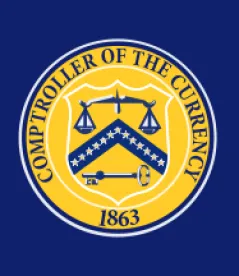On May 20, 2020, the Office of the Comptroller of the Currency (OCC), which regulates national banks, released a Final Rule intended to strengthen and modernize the implementation of the Community Reinvestment Act, 12 U.S.C. § 2901 et seq. (the CRA). The CRA was originally enacted in 1977 to reverse decades of financial “redlining” whereby banks were not servicing the needs of all, particularly communities of color, by encouraging banks to help meet the credit needs of all local communities it serves, including low- and moderate-income (LMI) neighborhoods.1 The CRA requires federal banking agencies to assess a bank’s record of meeting the credit needs of its entire community, including LMI neighborhoods, consistent with the safe and sound operation of such institution, and take such record into account in its evaluation of an application for a deposit facility by such institution.
Despite the CRA’s well-intended goals and incentives, it has historically had little impact in increasing access to capital and credit in Native American communities and on Indian Reservations. Native Americans and Indian Tribes continue to be one of the most under-banked populations in the United States and pay some of the highest interest rates for financial services, including for mortgages. This new CRA rule may increase incentives and shift these statistics.
The Final Rule is intended to reflect organizational and technological changes in the banking industry and to better define and increase incentives for banks to provide access to capital and credit for underserved communities, including tribal governments, communities, and their citizens. The Final Rule is limited to OCC regulated national banks. Banks supervised by the Federal Reserve Board and the FDIC will continue to be subject to existing CRA regulations.
OCC’s New ‘Qualifying Activities Criteria’ Includes Activities Aimed at Indian Country, Regardless of Whether It Is in Their Assessment Area
-
Any retail loan “located in Indian Country or other tribal and native lands” is now listed as a “Qualifying Activity”– an action specifically eligible for the bank to receive credit under CRA – this includes mortgages, small business loans, farm loans, and consumer loans.
-
Providing financing to Tribal Government programs, projects, or initiatives is also listed as a Qualifying Activity if it:
- partially or primarily serves small businesses or small farms;
- focuses on a government revitalization, stabilization, or a recovery plan for Indian Country.
- partially or primarily serves small businesses or small farms;
Other Activities Important to Native Americans and Indian Country Now Specifically Eligible for CRA Credit. Examples:
-
Tribal Government programs, projects, or initiatives that focus on a government revitalization, stabilization, or a recovery plan for Indian Country;
-
Home mortgages guaranteed under the HUD 184, USDA Rural Housing, and VA loan guarantee programs to LMI individuals living anywhere in the country (see CRA Illustrative List);
-
Any of these loans if located in Indian Country:
-
any mortgage, residential construction loan, or home equity lines of credit;
-
auto loans;
-
consumer loans;
-
small business loans;
-
farm loans.
-
-
Any of these community development investments if located inIndian Country:
-
essential community facilities;
-
essential infrastructure;
-
low-income housing (rental and owner occupied), including in conjunction with Tribal government housing programs;
-
Banks Can Receive Additional Credit in the CRA Evaluation Measure When the CRA Activities Are in Indian Country:
-
The CRA Evaluation Measure enhances the amount of credit a national bank could receive for branches in Indian Country and other tribal and native lands;
-
The portion of a bank’s branches located in or serving Indian Country and other tribal and native lands census tracts will increase the CRA credit.
What Areas Qualify as ‘Indian Country’ and ‘Other Tribal and Native Lands’ for CRA Credit?
The CRA’s new definition is broad and encompassing. Combined, the definitions of “Indian Country” and “Other Tribal and Native Lands” include:
-
All lands as defined by Indian Country in 18 U.S. Code § 1151, which includes:
-
All land within the limits of any Indian reservation (under the jurisdiction of the United States Government, notwithstanding the issuance of any patent, and, including rights-of-way running through the reservation);
-
All dependent Indian communities within the borders of the United States (whether within the original or subsequently acquired territory thereof, and whether within or without the limits of a state);
-
All Indian allotments (the Indian titles to which have not been extinguished, including rights-of-way running through the same).
-
-
All of these lands as defined by the Census:
-
Tribal Census Tracts;
-
Oklahoma Tribal Statistical Areas;
-
Tribal Designated Statistical Areas;
-
Alaskan Native Village Statistical Areas;
-
American Indian Joint-Use Areas;
-
State Designated Tribal Statistical Areas;
-
-
Hawaiian Home Lands
What Does This Mean for National Banks Interested in Investing in Indian Country?
Doing business with Native Americans and Tribal governments may be considered an untapped customer base ripe for CRA Credit investing. Despite an abundance of good projects and deals, Indian Country is generally under-banked.
There is a broad misconception that investing in Indian Country may be “unknown” or riskier than other investing. Done properly, with knowledgeable counsel, investing in Indian Country is comparable to any other similarly situated investment, and may bring unique positive impacts.
There is a thirst for good, fair capital. These new CRA rules expand CRA credit for national banks investing in Native Americans, in Indian Country, and with Tribal Governments.
112 U.S.C. §2901 (“It is the purpose of this chapter to require each appropriate Federal financial supervisory agency to use its authority when examining financial institutions, to encourage such institutions to help meet the credit needs of the local communities in which they are chartered consistent with the safe and sound operation of such institutions.”).






 />i
/>i

